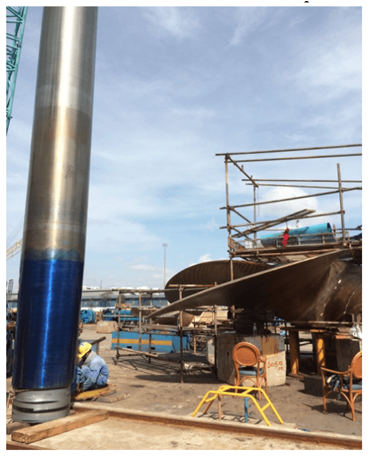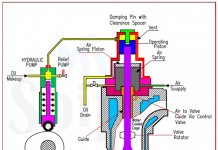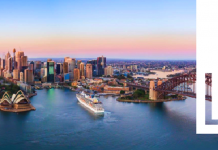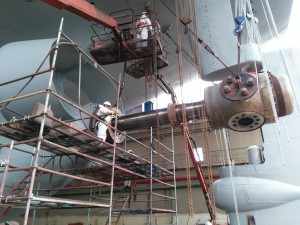
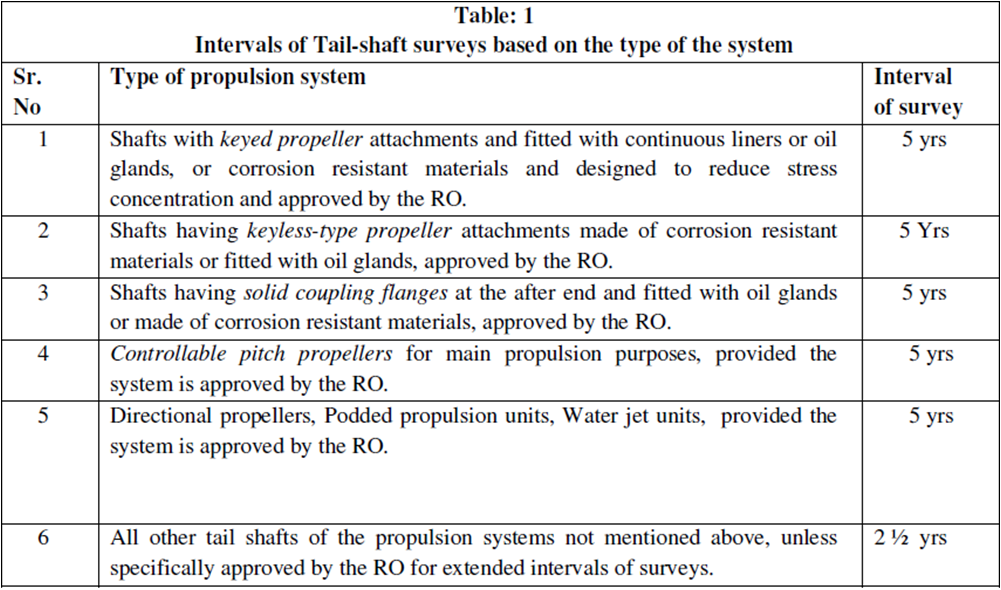
Different types of surveys
Normal survey : These are the conventional survey processes in which the tail- shaft is completely withdrawn at intervals as detailed in Table:1 and thoroughly examined to the satisfaction of the Recognised Organization.
- Controllable pitch propellers,
- Directional propellers,
- Podded propulsion units,
- Water jet units and other nonconvention
Propulsion systems are to be opened up and the working parts
inspected, together with the control gears, to the satisfaction of the RO.
Modified survey: The Modified Survey comprise of the partial-withdrawal of the shaft, sufficient to ascertain the condition of the stern bearing and shaft in way.
For Keyed propellers: Carry out a non-destructive inspection by an approved crack detection method of about one third of the length of the taper from the big end, for which dismantling of propeller will be required.
For keyless propellers: a visual examination to confirm the satisfactory condition of the sealing arrangements is to be made. The oil glands are to be capable of being replaced without removal of the propeller.
Partial Surveys:- The Partial Survey consists of the propeller being backed off in any keyed shaft and the top half of the cone examined by an efficient crack detection method.
- the removal of the key.
- Oil gland and seals are to be examined and dealt with as necessary.
- Wear-down is to be measured and found satisfactory.
Propeller and fastenings are to be examined.
Tail-shaft Condition Monitoring (TCM) Program: For the vessels complying With IACS fitted with oil lubricated shafts and approved oil glands or any other equivalent arrangements approved by the RO may be assigned with suitable Tail-shaft Condition Monitoring (TCM) or equivalent Notation as per the procedures of the Recognised Organization.
In this throughout the period with required periodical monitoring and tests, the intervals between the two consecutive withdrawals of tail-shaft may be extended to a maximum period of 10 years, by the concerned RO without any further approval from the Administration, provided the records to that effect shows that the system is maintained to its satisfaction.
In this case incomplete withdrawal of the Tail-shaft will not be required at the Modified Survey.
- T/S survey carried out once in 5 years. Or as per classification society rules The time interval can be extended depending upon certain information filled in log sheet. Information that include in condition monitoring of tailshaft are-
- Water content in oil report
- Oil consumption record
- Fwd and aft bearing temperature
- Particle analysis to be done
- Oil ageing ( resistance to oxidation)
- Upon analysis of data class may give extension for survey upto 7.5 years.
- previous survey report
- Spare seal is available onboard
- Spare temperature sensor
- Sufficient oil for replacement
- Fwd and aft bearings are available
- Poker gauge is available
- Availability of special tool for removal of intermediate shaft coupling
- Draining of s/t lube oil
- Log sheet, lifting appliances( chain block, wire sealings etc.)

Procedure
- Carry out jack up test
- Drain s/t lube oil
- Measure propeller drop
- Take no.1 unit to tdc
- Remove rope guard and drain plug
- Take prop drop reading using poker gauge at top and bottom
- Usual propeller drop= 1 mm/160 mm shaft dia
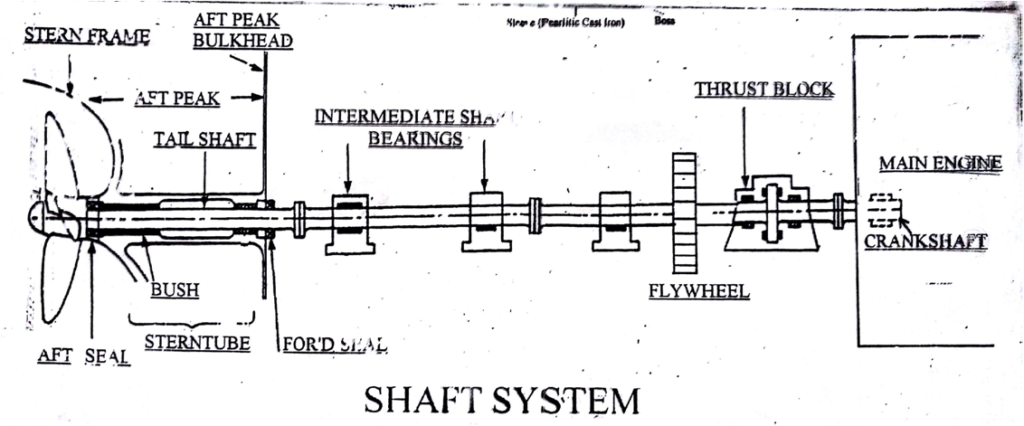
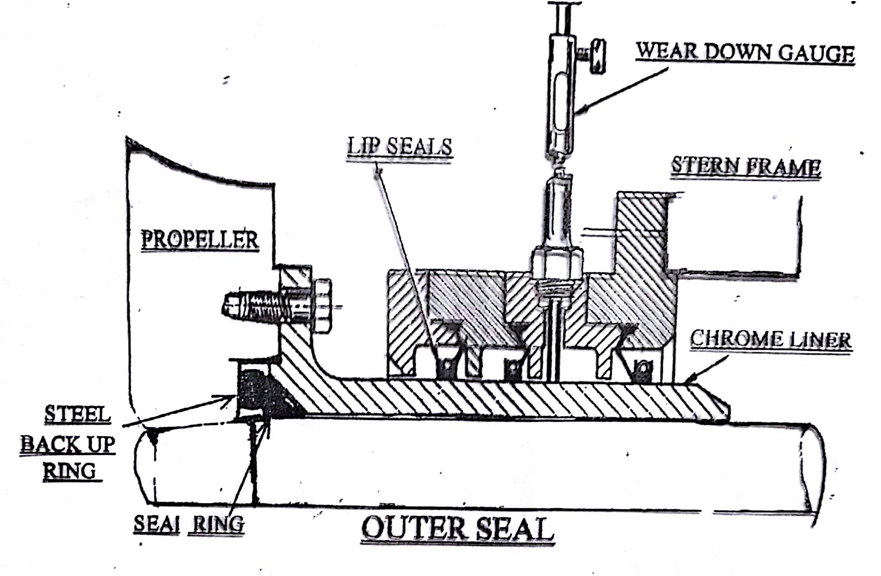
Propeller cone is to be separated and then slack the aft stern tube seal
– Then propeller nut is removed (make sure reference point is marked on the tail shaft) and the propeller is secured prior to the tail shaft removal.
– Lifting and shifting process need to be pre-planned
– Remove bolt of chrome liner with boss
– Takeout propeller with suitable lifting gear arrangement
– Remove aft seal and chrome liner
– Remove fwd seal and then put the tailshaft in lifting zone



checks
- Checks on bearings and seals
- Check condition of white metal bearing for wiping
- Check oil channels for traces of white metal
- Check bearing for fatigue cracking
- Check oil hole channels for blockage
- Check ovality of bearing with micrometre
- Spark erosion
- Calibrate sensors of bearing temperature
- Check lip seals
- Check groove on chrome liner
- Allowance is made to accommodate and polish outer dia of liner .the reduction in dia should be within manufacturer recommendation. Max skim of 48 mm on original dia of 1000 mm. the spring should be shortened for 3 mm per mm reduction in dia of liner
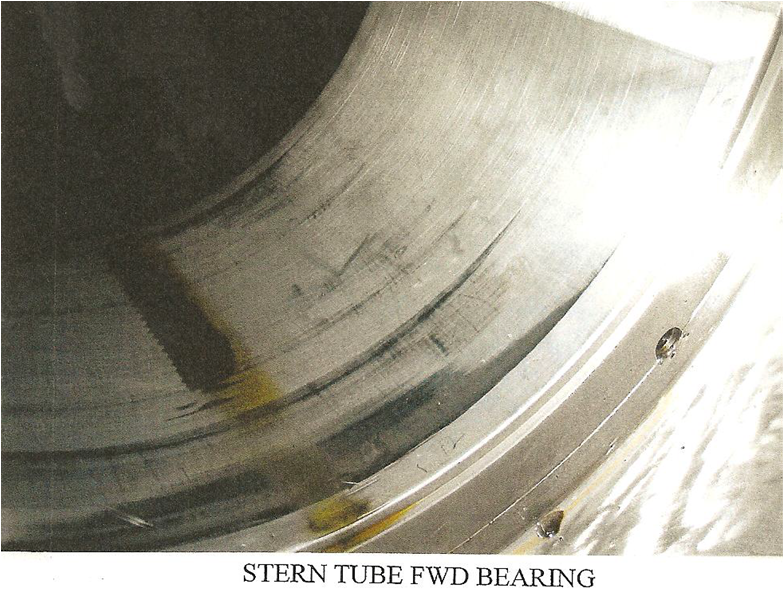
Checks on tailshaft
- Check the taper portion for cracks, grooving, corrosion
- Perform NDT on taper portion of tailshaft
- Overall condition of tailshaft for corrosion, fatigue, surface finish
- Threading on aft end of tailshaft
- Check flange coupling
- Check bedding of tailshaft
Propeller and tail shaft bedding shows how good is the contact. This is done by putting Prussian blue to the tail shaft tapered area. The contact area in the hub is visually inspected and the class requires at least 70-80% of contact. Blue mark zone on the hub is polished and process is repeated until you get 70-80% fit.
7. Take micrometre reading externally on the tailshaft and internally on the sterntube bearing
8. Check for watertight integrity of sterntube
